Vitals
- Locale: Western Nepal
- What It's Like: One of the world's great multidays. Endless classic whitewater set deep in the Himalayas.
- Class: IV+
- Scouting/Portaging: Varied - easy to difficult.
- Level: Visual. Go before or after the monsoon.
- Time: 4-7+ days
- When To Go: Northern hemisphere fall or spring.
- Info From: November 2013
- Other Beta: Purchase the Nepal Whitewater Guidebook for invaluable info about the Thuli Bheri, and Nepal in general.
- Map: Click here for a map of the river zone.



Description
Keep in mind this information is from the fall of 2013. Nepal is a rapidly changing, disorganized country and some of the info presented here will likely not be applicable in the future. Places (spelling, actual location) are difficult to pinpoint. Pete Knowles Nepal whitewater guidebook description of the river is accurate.
There are more photos of the river, and some random bits of river info, on the LiquidLore blog.
Not only is the Thuli Bheri one of Nepal's standout long multiday trips, it is perhaps one of the best multidays of its difficulty in the world. This isn't an exaggeration - the brilliant blue water of the Thuli flows from the remote district of Dolpa in western Nepal, and the scenery alone is worth the trip. For kayakers though, it is this rivers unique combination of utterly classic, moderately difficult and continuous whitewater for over 100 km with almost no portaging that makes it such an outstanding kayaking journey. Anyone who has ever been will surely sing the same tune.
The majority of the whitewater on the Thuli is in the class IV-IV+ range. Though there is a relatively small amount of class V, with one 3-4 km class V+ gorge that is usually portaged anyways, you really wouldn't want to do this trip with class IV skills due to the relentless stack up of rapids. It's absolutely necessary to be comfortable boat scouting long sections of grade IV-IV+ to get through the river in a reasonable amount of time without undue drama. As mentioned above, there is literally 100+ km of continuous whitewater in the upper reaches of the river followed by another 100 km of easier rapids in the paddle out. Relative to the Humla Karnali, western Nepal's other classic multiday, it is less of a mission in almost every way. They are both fantastic trips, but for different reasons.
The Thuli has no gauge, so you just have to show up at the put in and hope for the best. It's a long way from home, so you're probably going to take a crack at it whatever the flow. The best seasons are in November after the monsoon high water, and again in April before the monsoon. It's probably possible in the winter but it would be very cold in the upper reaches, and the water may drop down to be tediously low. If you wanted to try and run the Awulgurta gorge in full, it would be best to try at as low as possible. At a nice flow in November it was still too high to be reasonable for most people.
There is a considerable amount of info to consider when approaching the Thuli Bheri, and there are many ways to go about accessing the put in and stringing together a descent. The Nepal guidebook is mostly up to date. Unless you want to hike for weeks, the put in is accessed by plane. Our team found flying from Birendranagar/Surkhet to be a much better option than from Nepalgunj as talked about in the guidebook. Birendranagar is a pleasant town to hang out in for a few days whereas Nepalganj is a terrible hellhole. The Hotel Valleyview there is clean, cheap and the food is great. Both towns are 15+ hours from Pokhara.
You'll need to go to the airport to negotiate a flight - be prepared for some serious haggling. We could only fly in to a small dirt airstrip on river right - the name is unclear but we think it was called Masinchuar. The airstrip mentioned in the guidebook (Juphal, a few km upstream of Masinchuar on river left) was either closed (for how long who knows) or not used by the airline we chose (Goma Air) - this was also unclear. Either airstrip gets you in the river above the Golden Canyon. Juphal would be more appropriate for hiking upstream to Dunai and other locations, but flying in to Masinchuar provides for endless mind blowing views of the Dhaulagiri range while hiking to the river. We chartered a plane for the Surkhet-Masinchuar flight at a cost of $1500 USD for 5 kayakers + gear.
The hike from Masinchuar to the river follows an obvious ridge and took us about 5 hours. Juphal is shorter and closer to the river. See the guidebook for more info on upstream kayaking and hiking opportunities. The Thuli has good camping along the whole length of the river - there is a fair bit of opportunity to camp in places away from the main trail where you won't be hoarded by locals. Anywhere you will need to scout or portage is at river level and in some cases the trail is right next to the river making it very easy to get around. Moving at a reasonable pace you should be able to paddle the Thuli Bheri in 4 days from Masinchuar/Juphal to the confluence of the Sani Bheri, then another 2 days on the main Bheri down to the road bridge near Birendranagar.
The river starts with a bang shortly below the put in with a long IV+ boulder rapid. This mellows out as you enter the Golden Canyon, a 10 km stretch of awesome grade IV whitewater with some larger standout rapids that you'll need to scout. You'll eventually exit the Golden Canyon (possibly the end day 1), but the continuous whitewater continues for another day below here until you reach some flatwater above the Awulgurta gorge. This section is marked by long flats that end with a large suspension bridge and an obvious change in river character. It's easiest to get out and scout from above the bridge. The next 3-4 km is a stacked section of class V-V+ that is probably only runnable in full at the lowest water levels, and even then it will be stout. Come expecting to portage. The portage around the gorge follows good trails through villages on river left, and will take a few hours. Put in at the next suspension bridge where the gorge obviously ends.
By now the volume has grown substantially and the Thuli is a good sized river - the next 10-15 km is a great section of class IV-V. The river eventually starts to mellow out for good, but interesting rapids continue right down until the confluence of the Thuli and the Sani Bheri and the first sighting of the road. The next 2 days are mellow (with one nice class III stretch below Devisthal) but paddling all the way out to the road bridge that leads back to Birendranagar is certainly better than a nasty bus ride!
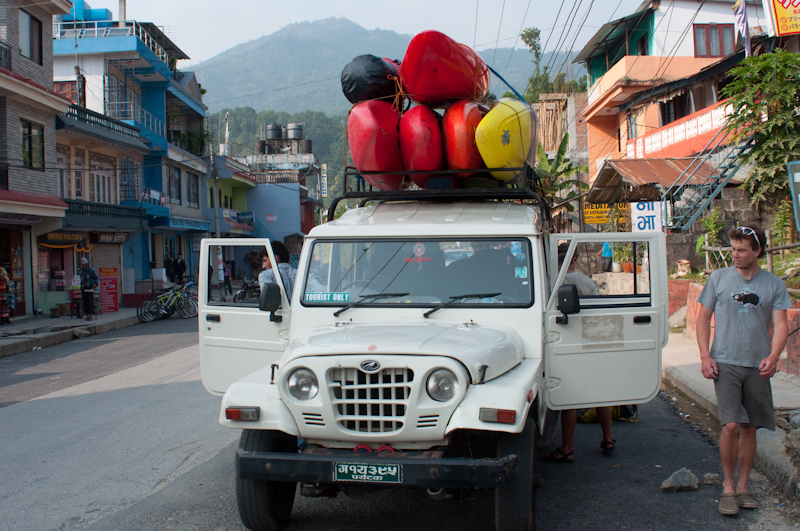 Loading boats in Pokhara for the long drive to the west of Nepal.
Loading boats in Pokhara for the long drive to the west of Nepal.
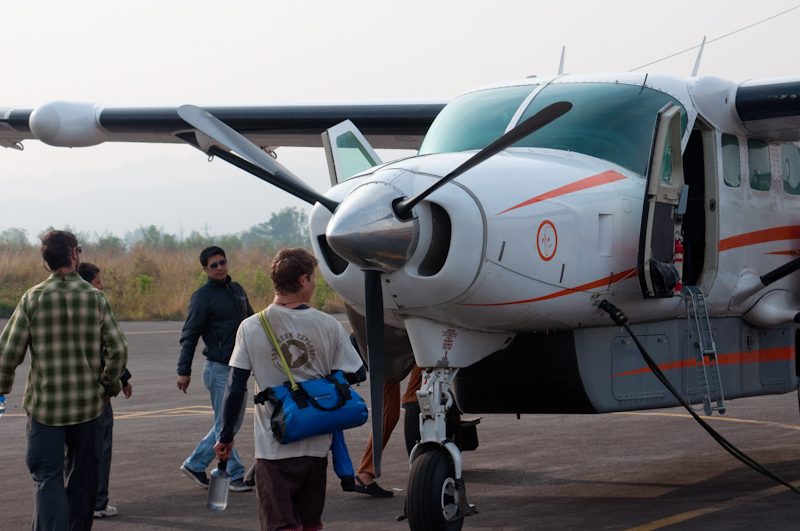 Goma Air Cessna ride to the top of the Thuli.
Goma Air Cessna ride to the top of the Thuli.
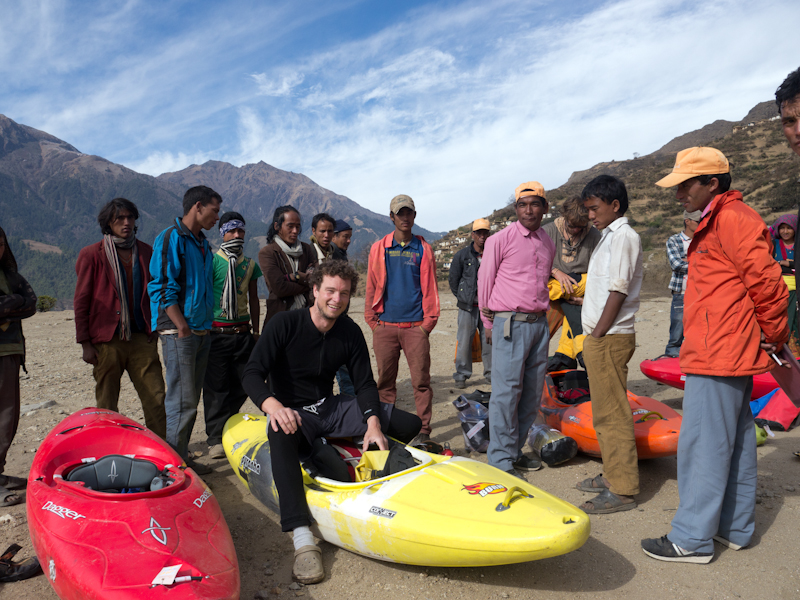 A gathering crowd at the Masinchuar airport. Photo Si Rutherford.
A gathering crowd at the Masinchuar airport. Photo Si Rutherford.
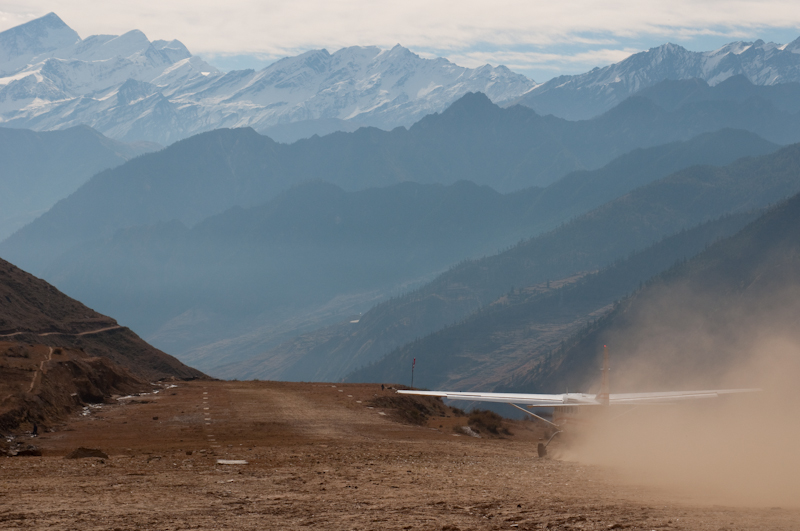 Being left behind amongst giant mountains.
Being left behind amongst giant mountains.
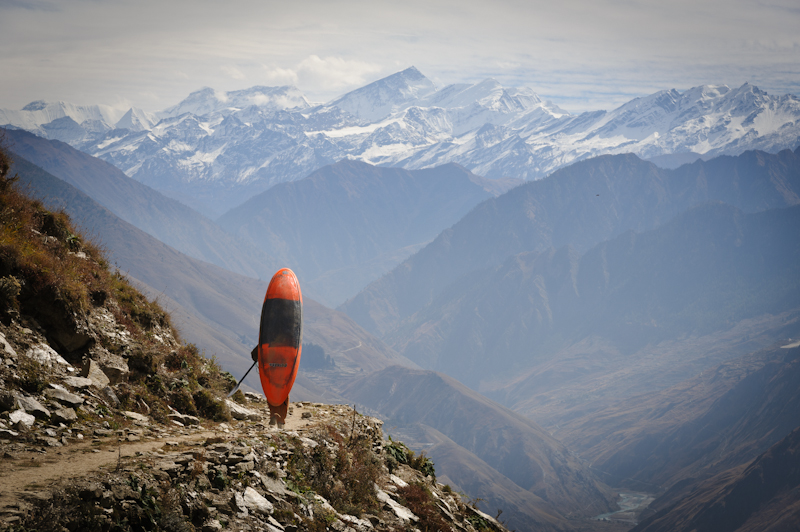 The start of the long downhill walk to the river from Masinchuar. Photo Maxi Kniewasser.
The start of the long downhill walk to the river from Masinchuar. Photo Maxi Kniewasser.
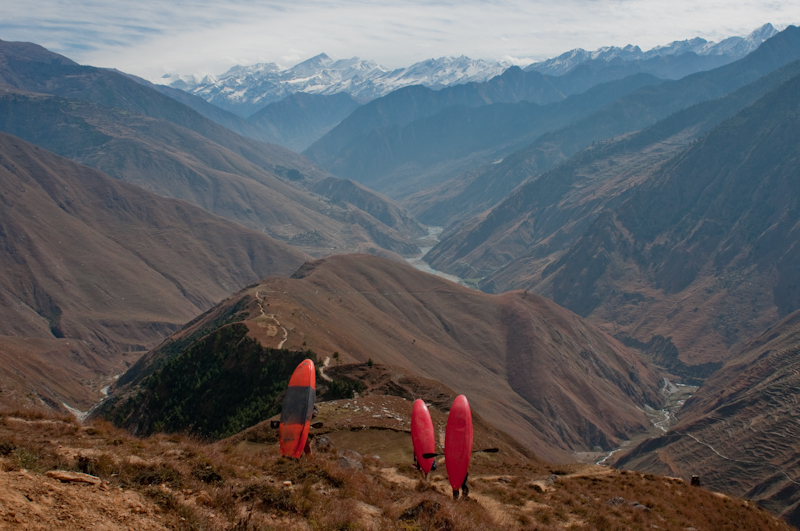 A beautiful river valley - follow the ridge to the river.
A beautiful river valley - follow the ridge to the river.
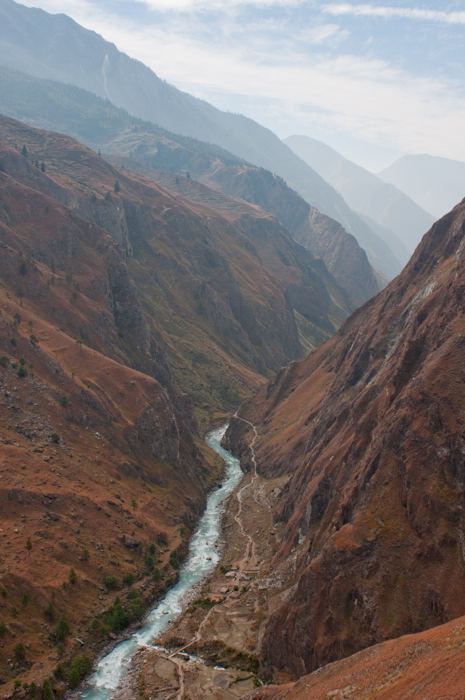 The first glimpse into the Golden Canyon.
The first glimpse into the Golden Canyon.
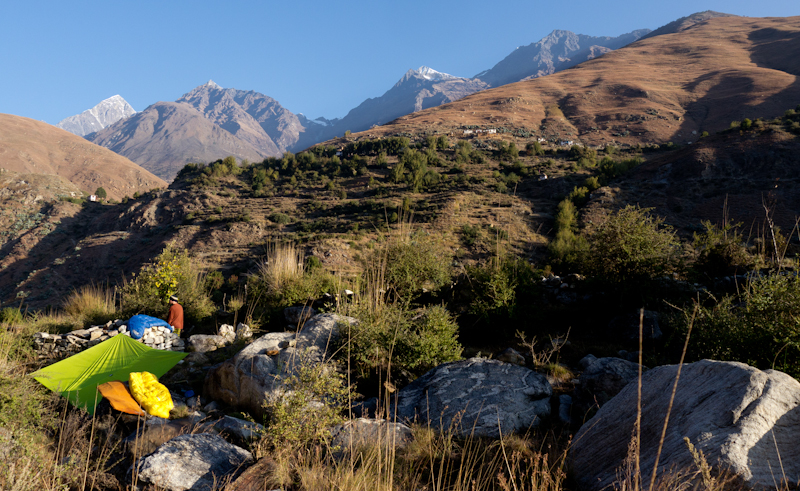 Awesome camping after hiking to the river. Photo Si Rutherford.
Awesome camping after hiking to the river. Photo Si Rutherford.
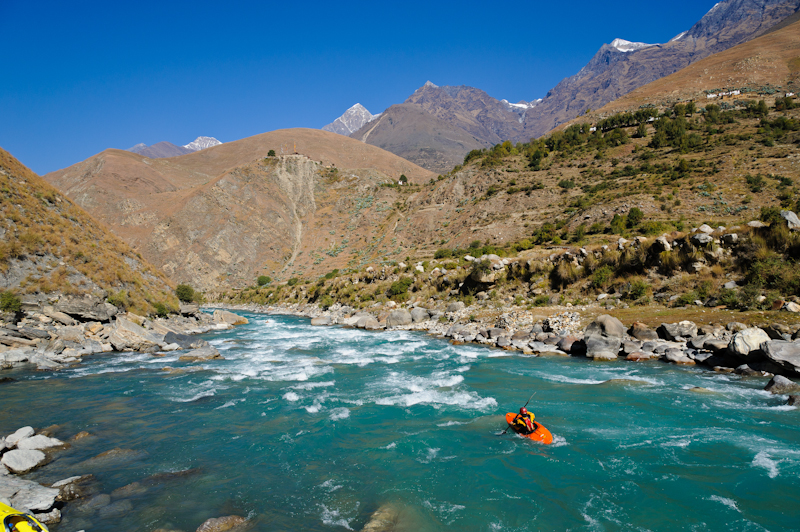 The first paddle strokes on this beautiful river. Photo Maxi Kniewasser.
The first paddle strokes on this beautiful river. Photo Maxi Kniewasser.
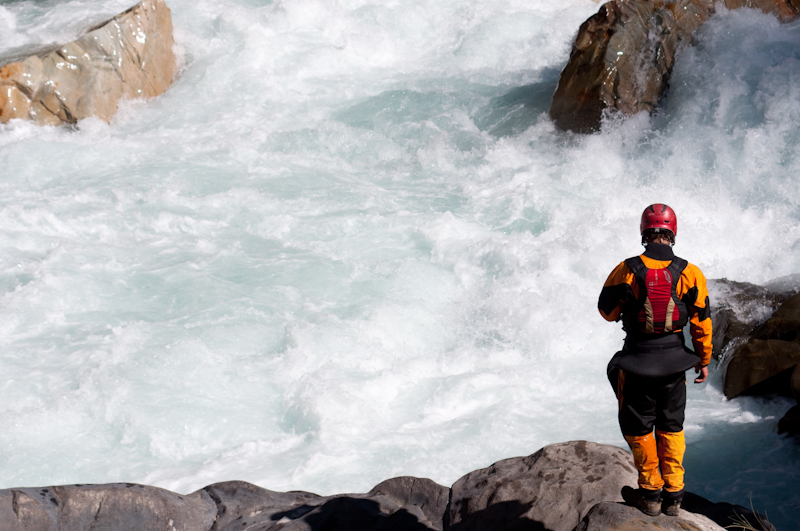 Scouting something gnarly early in the Golden Canyon.
Scouting something gnarly early in the Golden Canyon.
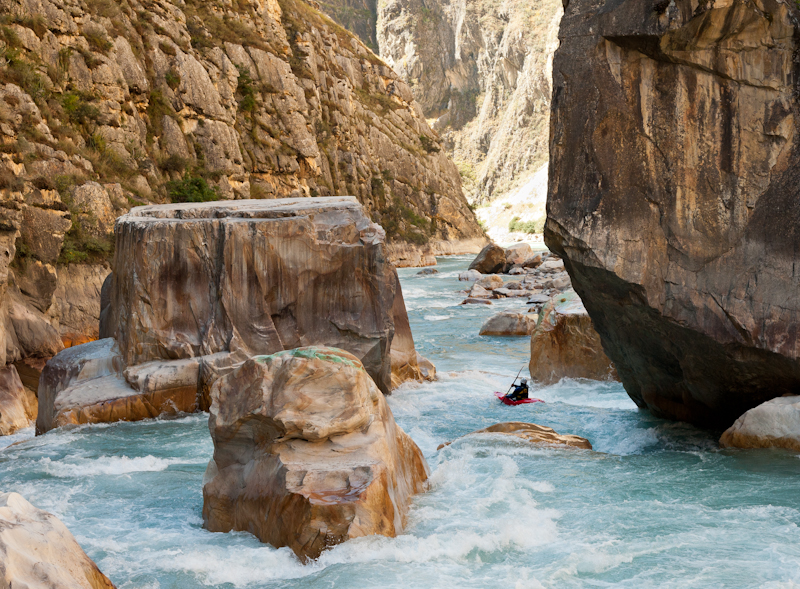 Heart of the Golden Canyon. Photo Maxi Kniewasser.
Heart of the Golden Canyon. Photo Maxi Kniewasser.
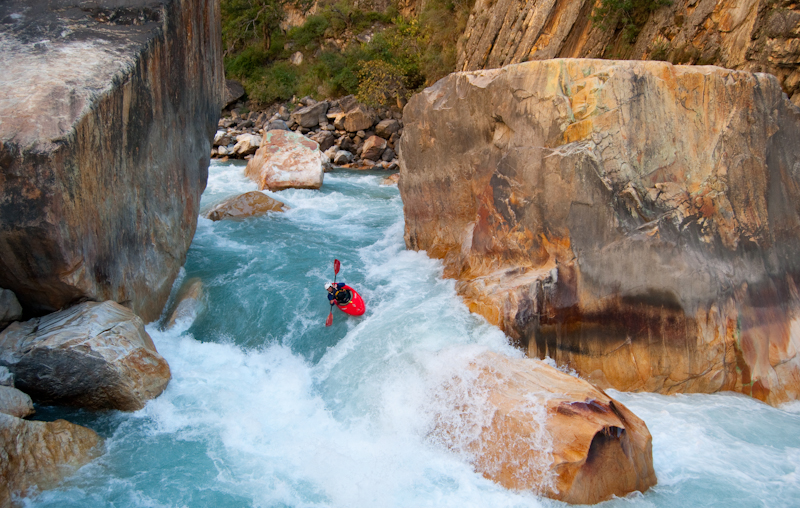 The marquee rapid in the heart of the Golden Canyon.
The marquee rapid in the heart of the Golden Canyon.
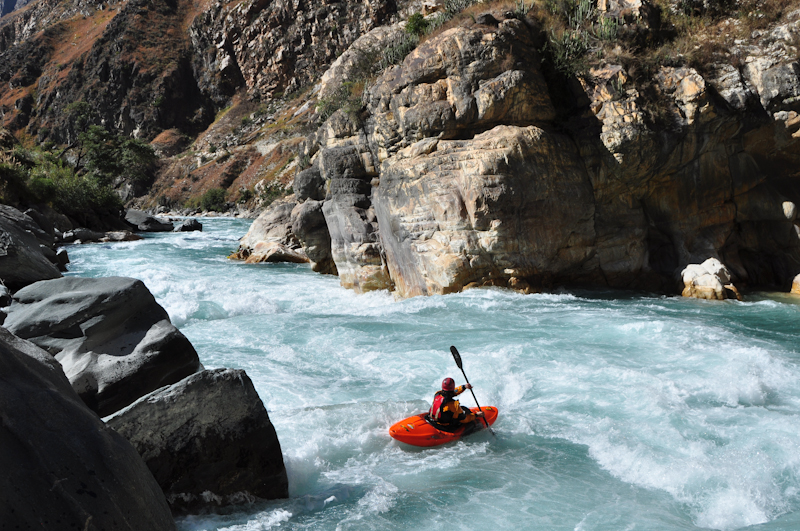 Random rapids in the Golden Canyon.
Random rapids in the Golden Canyon.
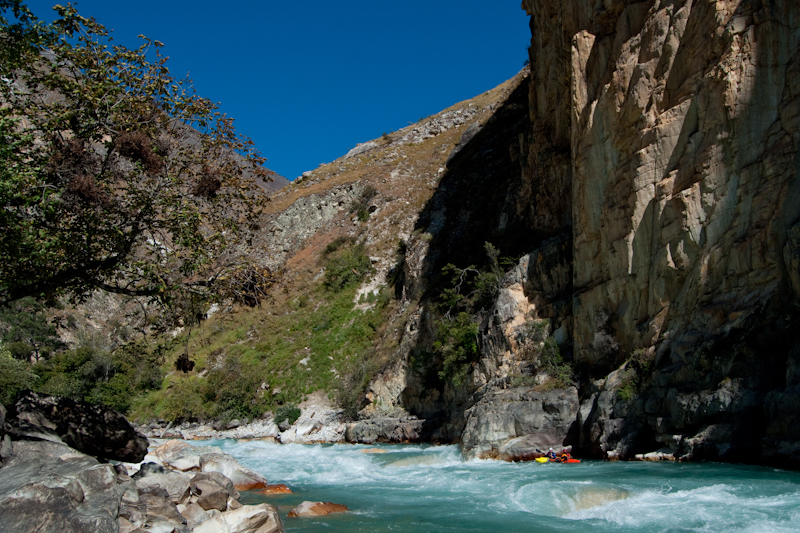 More Golden Canyon.
More Golden Canyon.
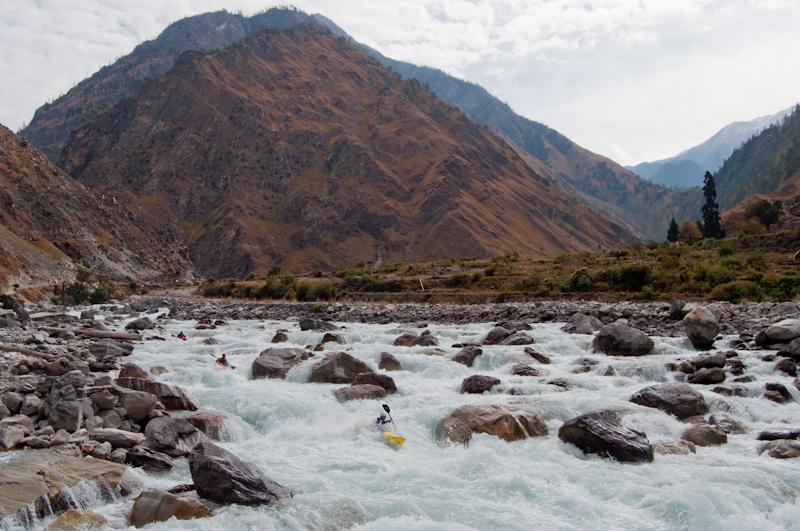 The river valley eventually opens up, but the continuous whitewater continues for days.
The river valley eventually opens up, but the continuous whitewater continues for days.
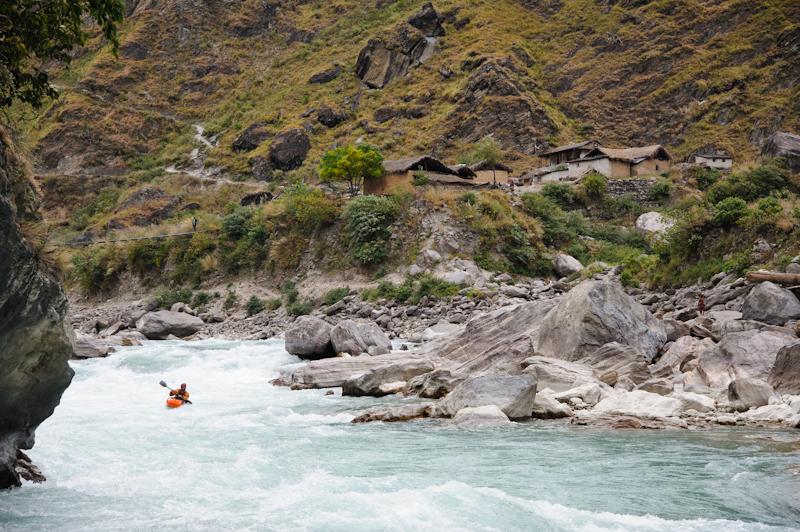 By the second day the volume has started to increase. Photo Maxi Kniewasser.
By the second day the volume has started to increase. Photo Maxi Kniewasser.
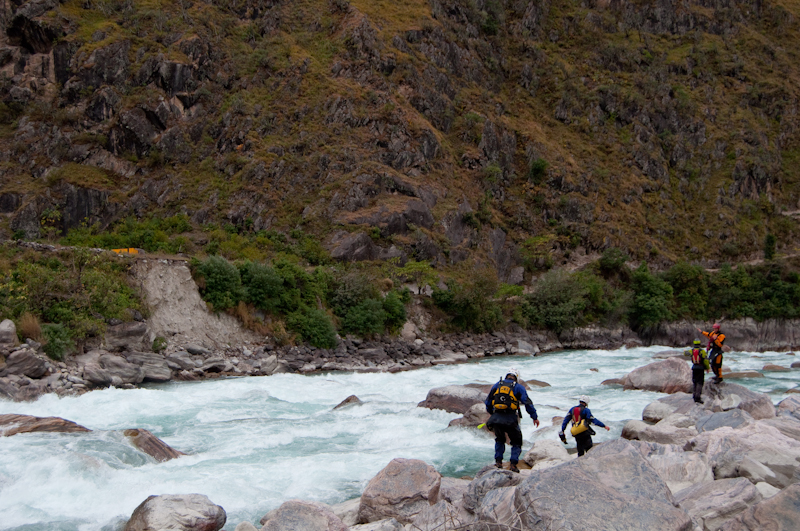 Scouting one of the last big rapids before the flat section above the Awulgurta gorge.
Scouting one of the last big rapids before the flat section above the Awulgurta gorge.
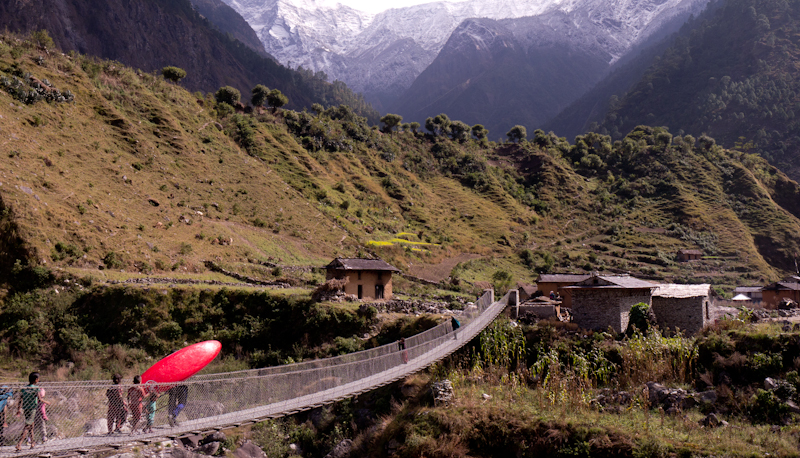 The portage trail around the Awulgurta gorge. Photo Si Rutherford.
The portage trail around the Awulgurta gorge. Photo Si Rutherford.
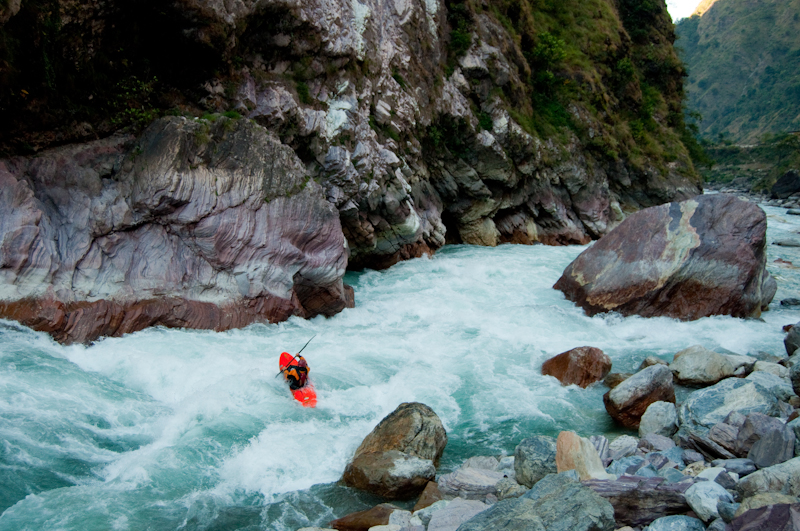 The short but challenging canyon in the lower reaches of the Thuli Bheri.
The short but challenging canyon in the lower reaches of the Thuli Bheri.
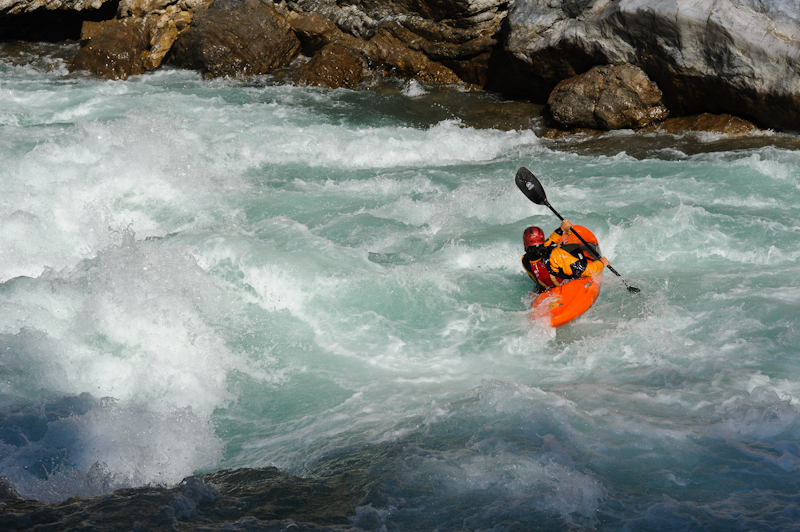 The whitewater just doesn't stop. Photo Maxi Kniewasser.
The whitewater just doesn't stop. Photo Maxi Kniewasser.
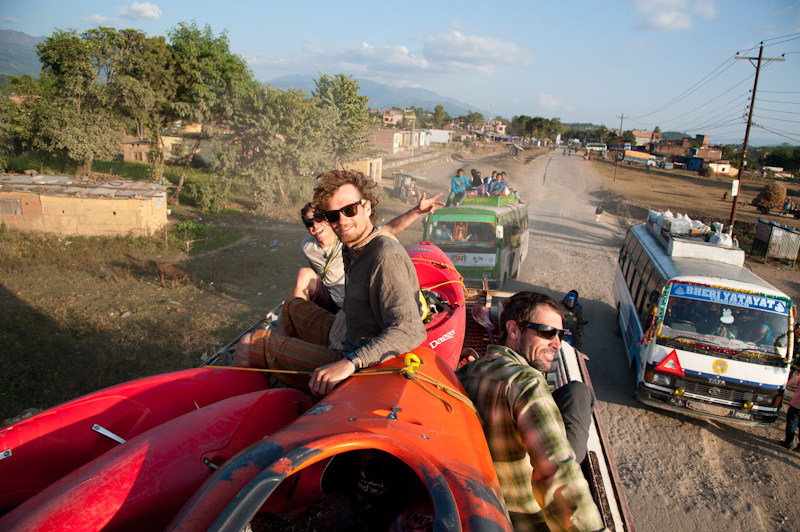 Successful return to Birendranagar. Photo Maxi Kniewasser.
Successful return to Birendranagar. Photo Maxi Kniewasser.
Updated March 25, 2014

